Disclosure: This article contains affiliate links. We may earn a commission from purchases at no extra cost to you, which helps our travel content.
¡Hola, Abenteurer! There's something magical about discovering hidden waterfalls that makes my German-Mexican heart beat faster. Having spent years inspecting safety protocols for rafting adventures, I've developed a sixth sense for finding those perfect water destinations that balance thrill with security. La Vega province in the Dominican Republic is precisely that kind of gem – a verdant playground of cascading waters tucked away from the usual tourist paths. Last fall, while my friends were posting photos from Punta Cana's beaches, I ventured inland with my hiking boots and safety equipment to explore La Vega's mountainous terrain. What I discovered were seven breathtaking waterfalls that combine the perfect mix of adventure, natural beauty, and authentic Dominican culture – all without breaking the bank. Whether you're seeking a romantic weekend with your partner or a chance to reconnect with nature, these hidden cascades offer the perfect backdrop for creating unforgettable memories.
Salto de Jimenoa: The Perfect Introduction to La Vega's Waters
My adventure began where many locals recommended – at the famous Salto de Jimenoa, actually two distinct waterfalls that serve as the perfect introduction to La Vega's natural wonders. Located just outside Jarabacoa, these falls were featured in the opening scenes of Jurassic Park, though surprisingly few international tourists make the journey here.
Jimenoa Uno (the first fall) requires a moderate 25-minute hike down a sometimes slippery path. As a safety inspector, I immediately noticed the improved trail maintenance compared to my visit three years ago – wooden handrails have been installed at steeper sections, though I still recommend using a hiking pole for extra stability, especially during fall's occasional rain showers.
The real magic happens when you reach the base of the 60-meter cascade. The thundering water creates a natural mist that cools you instantly – nature's air conditioning! Unlike more developed waterfall attractions, here you can still experience the raw power of nature without wooden platforms or crowds.
Jimenoa Dos (the second fall) is less visited but equally impressive. The trail here is more challenging, requiring about 40 minutes of hiking with some rock scrambling. My German precision kicked in as I carefully mapped the safest route down, noting loose rocks and slippery sections. The reward is worth every careful step – a more intimate waterfall experience with emerald pools perfect for a refreshing dip.
"Manchmal muss man abseits der ausgetretenen Pfade gehen, um wahre Schönheit zu finden" (Sometimes you must go off the beaten path to find true beauty) – my father's words echoed as I stood alone at Jimenoa Dos, the only visitor that cloudy Tuesday morning in October.
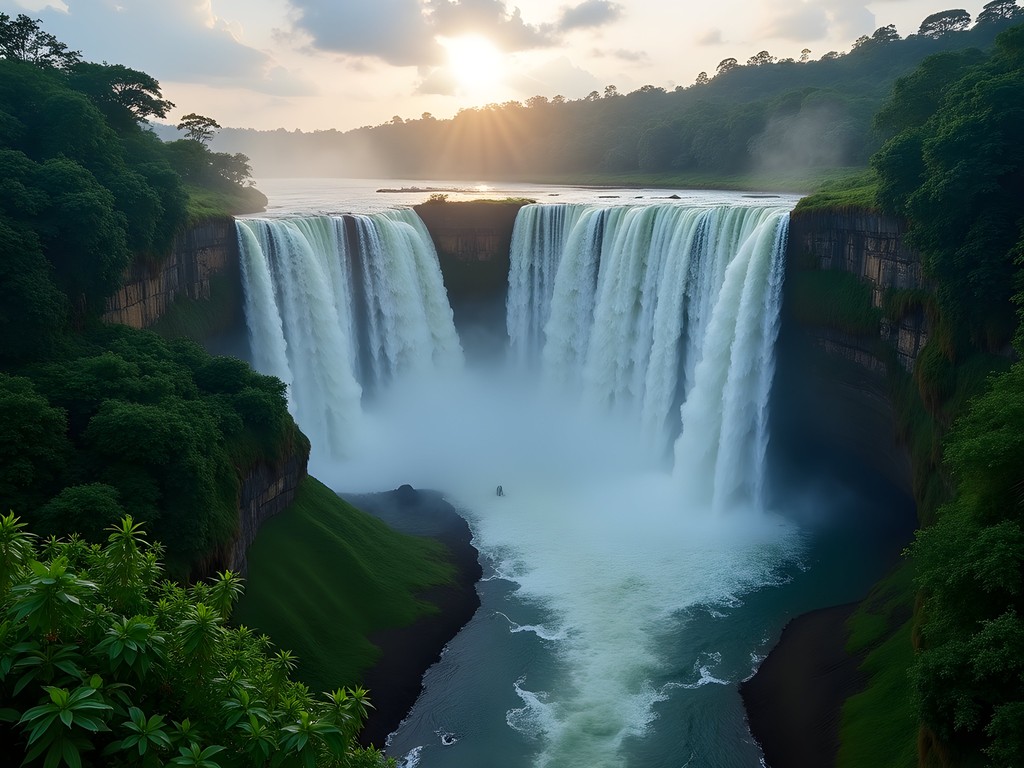
💡 Pro Tips
- Visit on weekdays to avoid local weekend crowds
- Wear water shoes with good grip – the rocks are slippery
- Pack a dry bag for electronics – the mist reaches farther than you'd expect
El Salto de Baiguate: The Hidden Gem for Couples
Just 7 kilometers from Jarabacoa lies my personal favorite – El Salto de Baiguate. This 25-meter waterfall cascades into a perfect heart-shaped pool, making it especially popular with local couples. Yet somehow it remains under the radar for most international visitors.
The approach to Baiguate showcases the Dominican Republic's rural charm. The drive winds through coffee plantations and small villages where life moves at a refreshingly slower pace. I recommend arranging transportation with local drivers (about 800 Dominican pesos round-trip) rather than navigating the rough roads yourself.
The trail to the waterfall is relatively easy – about 15 minutes of walking through a well-maintained path. What makes this experience special is the natural pool at the base. Unlike some of La Vega's other falls, swimming here is not just possible but encouraged. The depth is perfect – around 2 meters in the center – and the current is gentle enough for intermediate swimmers.
For couples, this is the most romantic of La Vega's waterfalls. I've witnessed several marriage proposals here, and local legend says that couples who swim together in the heart-shaped pool will stay together forever. Whether you believe in such tales or not, the setting is undeniably magical.
Safety tip from my rafting days: the rocks behind the waterfall can be extremely slippery. If you want to venture behind the cascade (which I highly recommend for the unique perspective), invest in proper water shoes rather than flip-flops. I've seen too many twisted ankles from improper footwear at water attractions.
Pack a small picnic to enjoy on the flat rocks surrounding the pool. There are no facilities or food vendors here, which preserves the tranquility but means you should come prepared. My German planning tendencies always kick in here – I bring extra water, snacks, and a small waterproof blanket that packs down incredibly small but provides the perfect spot for a romantic lunch.
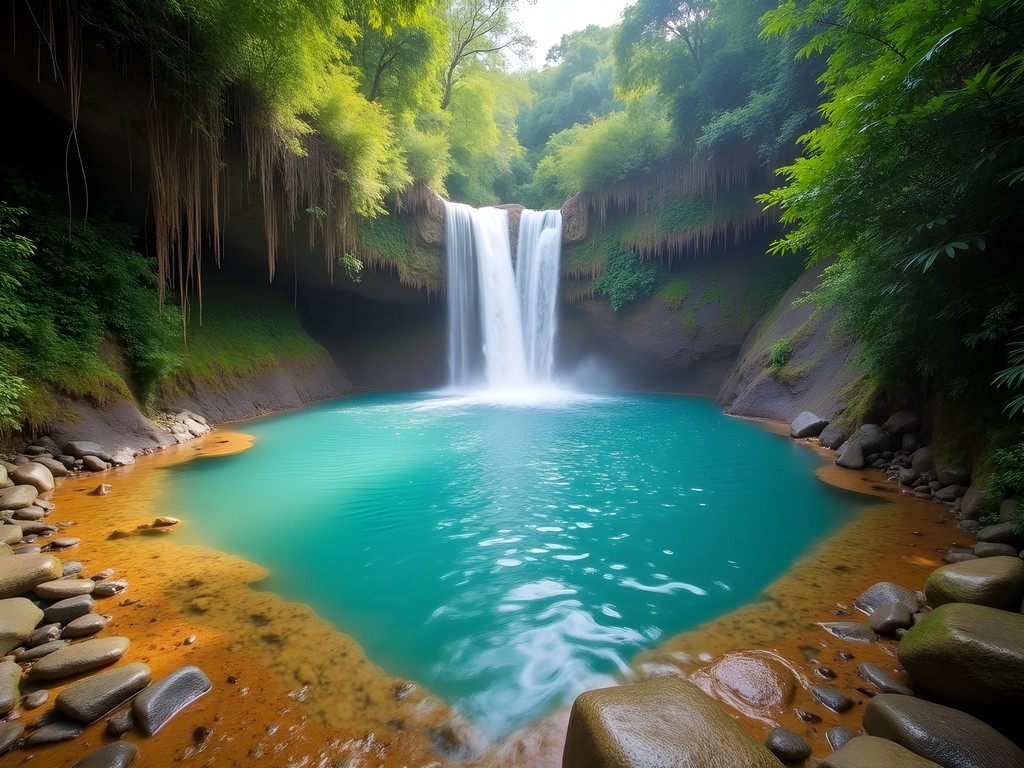
💡 Pro Tips
- Arrive around 2pm when the light creates rainbows in the mist
- Bring Dominican pesos for the small entrance fee (200 DOP per person)
- Pack a change of clothes in a waterproof bag for the drive back
Salto de Aguas Blancas: The Tallest Challenge
For adventure seekers who don't mind working for their reward, Salto de Aguas Blancas is an absolute must. At 83 meters, it's the tallest waterfall in the Caribbean, though reaching it requires the most challenging hike on this list.
My safety inspector instincts were on high alert during this trail. The path to Aguas Blancas is not for beginners – it's a solid intermediate hike that takes about 1.5 hours each way through sometimes muddy and steep terrain. In fall, the trail conditions can vary dramatically depending on recent rainfall. I strongly recommend hiring a local guide (around 1,500 DOP) who knows the current conditions and the safest routes.
During my last visit, I partnered with a guide named Miguel who pointed out details I would have missed – from edible wild berries to the safest crossing points at small streams. His family has lived in the region for generations, and his stories about the waterfall's history added rich context to the experience.
The trail itself winds through dense forest with occasional clearings offering spectacular views of the Cordillera Central mountains. The final approach requires crossing a small river multiple times, so expect wet feet regardless of your footwear choice.
When you finally reach Aguas Blancas, the sight is breathtaking. The water plummets down a sheer rock face, creating a constant mist that supports a microclimate of ferns and mosses. Unlike the other falls on this list, swimming isn't advisable here due to strong currents and submerged rocks – something my safety background immediately identified.
Photography enthusiasts will want to bring a waterproof camera to capture the fall's majesty without worrying about water damage. The constant spray makes smartphone photography challenging, and I've seen too many tourists with water-damaged phones trying to get that perfect shot.
The effort required to reach Aguas Blancas means you'll likely have a more intimate experience than at easier-to-access falls. On my visit, we encountered only two other couples during the entire day – a rarity in a country increasingly popular with tourists.
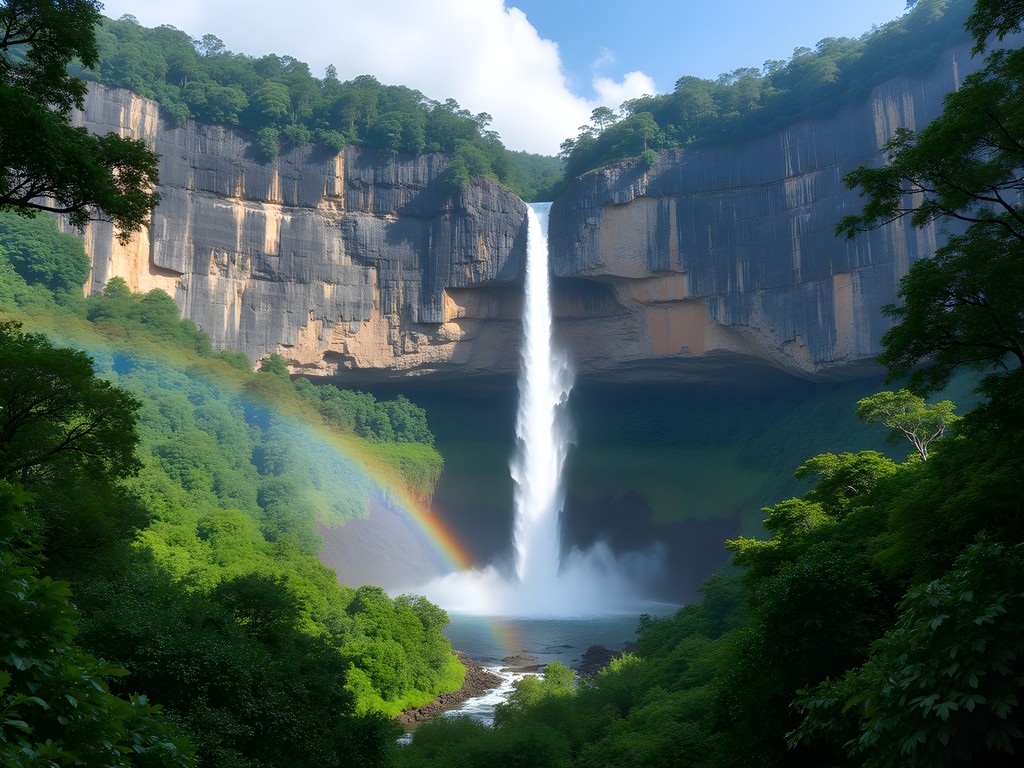
💡 Pro Tips
- Start early (7am is ideal) to have plenty of time for the round-trip journey
- Pack more water than you think you'll need – the humidity makes you dehydrate faster
- Bring high-energy snacks – there are no food options along the trail
El Salto de Jima: The Local's Secret
Some places remain special precisely because they stay hidden. El Salto de Jima is that kind of treasure – a place where you'll see more Dominican families than foreign tourists. Located near the small town of Jima, this waterfall complex features a series of cascades rather than one dramatic drop.
Finding Jima requires some detective work. There are no official signs, and Google Maps isn't entirely reliable in this region. This is where my multicultural background became an advantage – my Spanish-speaking abilities helped me ask locals for directions when my GPS failed in the mountainous terrain.
The best approach is to head to the town of Jima and ask for "El Salto" – locals will point you to a small dirt road leading to an informal parking area. From there, it's a relatively easy 20-minute walk to the falls. Unlike other waterfall sites, there's no official entrance fee, though I recommend carrying small bills to tip the local children who sometimes act as impromptu guides.
What makes Jima special is its multi-tiered nature. Rather than one large fall, you'll find a series of smaller cascades creating natural pools of varying depths. This makes it perfect for couples with different swimming abilities – from shallow wading pools to deeper sections for confident swimmers.
The water here is noticeably cooler than at other falls, making it especially refreshing during hot afternoons. The locals have created small stone dams to form deeper swimming areas, and some brave souls use natural rock slides to enter the pools.
My favorite spot is the second pool from the top, which features a small cave behind the cascade where you can sit and feel the water rushing over the rock above you. It's a natural massage that rivals any spa treatment!
For lunch, bring your own provisions or walk back to Jima town where several homes operate informal restaurants (look for houses with handwritten "Comida" signs). For around 250 DOP, you can enjoy authentic Dominican dishes like la bandera (rice, beans, and meat) prepared by local families.
As with any lesser-developed attraction, practice responsible tourism here. I always pack a small trash bag to carry out not just my own waste but any other litter I find. These small actions help preserve these hidden gems for future visitors.
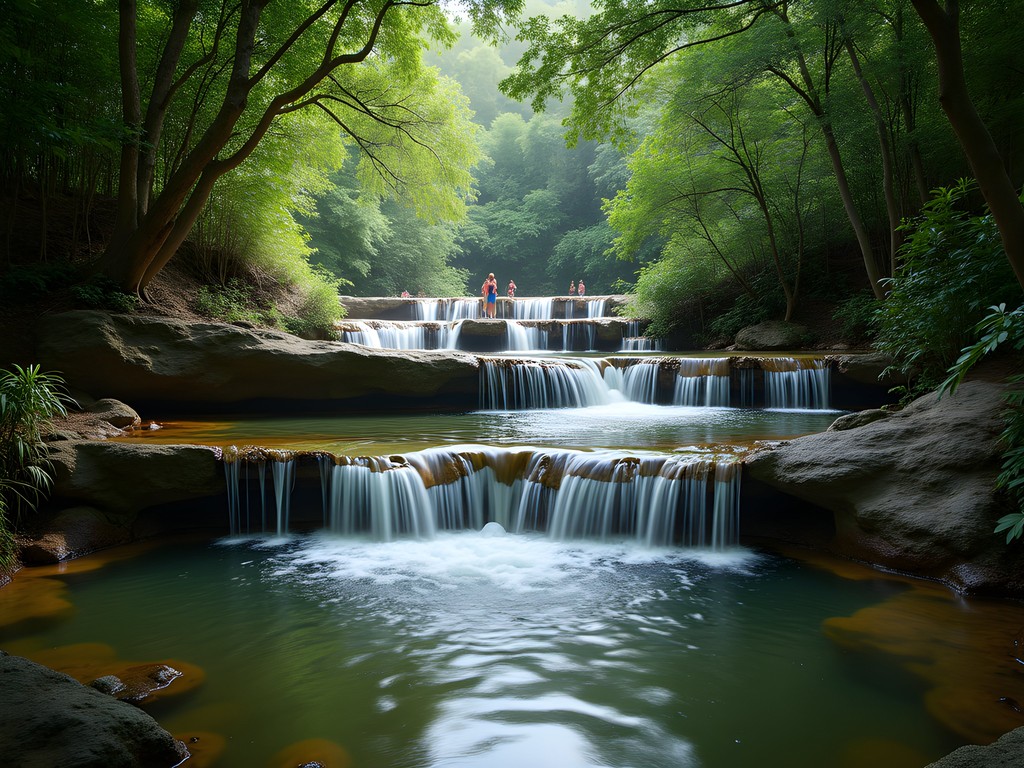
💡 Pro Tips
- Visit on Sundays to see local families enjoying their day off together
- Bring a waterproof pouch for your phone – the splashing water gets everywhere
- Learn a few Spanish phrases – very few people speak English in this area
Salto El Arroyazo: The Perfect Picnic Waterfall
Some waterfalls are all about the dramatic drop, while others create perfect environments for spending a leisurely day. El Arroyazo falls firmly into the second category – it's the ideal spot for couples seeking a romantic picnic by cascading waters.
Located near the town of Constanza (about an hour's drive from Jarabacoa), El Arroyazo features a wide, gentle cascade that spreads across a rock face before collecting in a series of calm pools. The site is partially developed, with basic facilities that make it comfortable for a day visit without detracting from the natural beauty.
What makes El Arroyazo special for couples is the natural layout – there are numerous semi-private spots among the rocks and trees where you can spread a blanket and enjoy a picnic with your own waterfall view. The sound of water creates natural white noise that makes conversations feel intimate despite being in a public space.
During my visit last October, the fall colors were beginning to show in some of the surrounding trees – a rare sight in the Caribbean but possible at these higher elevations. The temperature was perfect – warm enough for swimming but cool enough for hiking without excessive sweating.
The trail to El Arroyazo is well-maintained and relatively flat, making it accessible for most fitness levels. It takes about 30 minutes from the parking area, with clearly marked paths and even a few rustic wooden signs – a luxury in the Dominican Republic's often unmarked natural attractions!
For the perfect picnic experience, stop at the Jarabacoa farmers' market (Monday and Friday mornings are best) before heading to the falls. You'll find fresh tropical fruits, local cheeses, and freshly baked bread. My German precision comes out in my picnic planning – I bring a small insulated backpack that keeps drinks cold for hours even in tropical heat.
Safety note: While the pools at El Arroyazo appear calm, there are underwater currents in some areas. Stick to the clearly visible swimming zones where local families gather, and avoid the sections with warning signs (even if they're only in Spanish – "Peligro" means danger).
If you're lucky, you might encounter local musicians who sometimes play near the falls on weekends. There's nothing quite like listening to impromptu merengue or bachata music while dangling your feet in a cool mountain stream – it's the Dominican Republic at its most authentic.
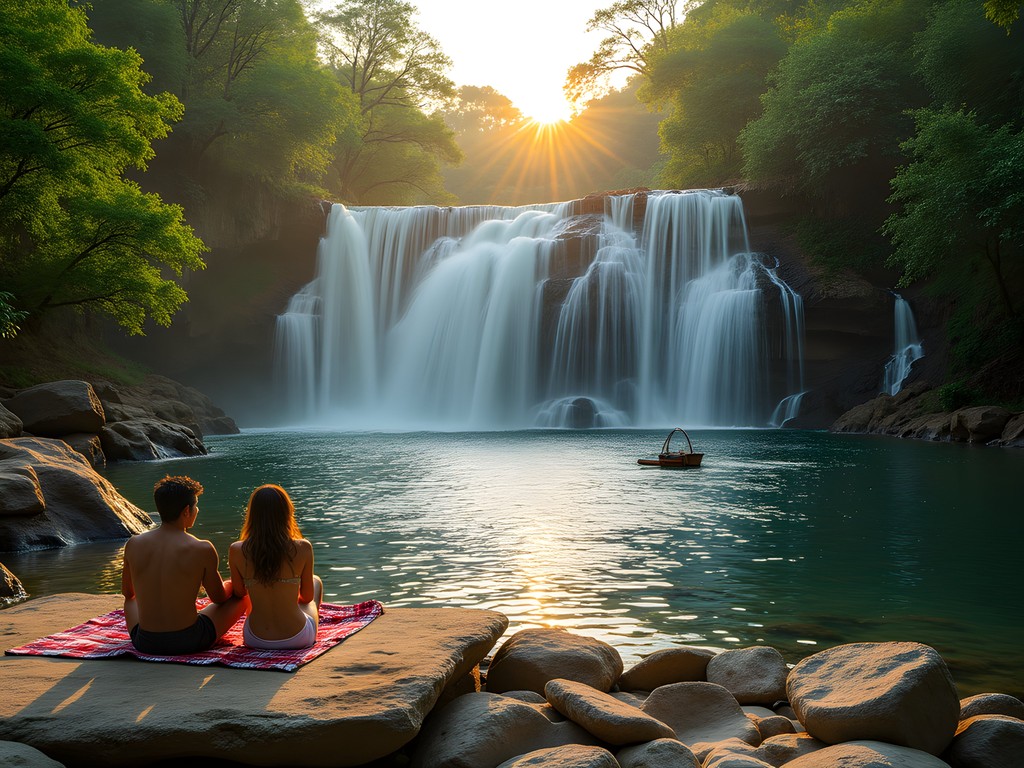
💡 Pro Tips
- Arrive before noon to claim one of the prime picnic spots under the mango trees
- Bring a hammock with tree straps if you have one – there are perfect trees for hanging
- The site has basic bathrooms but bring your own toilet paper and hand sanitizer
Salto Presa de Tavera: The Road Less Traveled
Not all of La Vega's impressive waterfalls are natural. The Presa de Tavera is a man-made dam that creates a spectacular cascade when water is released – a sight that combines industrial engineering with natural beauty in a way that fascinates my safety inspector mind.
This is truly off the beaten path. Most tourists – even adventure seekers – never make it here, partly because the waterfall isn't consistent. The dam releases water based on electricity needs and reservoir levels, creating a waterfall that might be roaring one day and merely a trickle the next.
The best way to time your visit is to ask locals in La Vega city about recent releases. Taxi drivers are surprisingly well-informed about this, as they often take Dominican visitors to the site. If you're lucky enough to visit during a substantial release, you'll witness a powerful demonstration of controlled water power.
The viewing area is undeveloped but safe if you stay within the obvious boundaries. My professional safety assessment: maintain at least 15 meters distance from the main cascade, as the force of falling water creates unpredictable splashes and occasional debris.
What makes this experience special for couples is the rarity – it's something few travelers get to see, creating a shared memory that's truly unique. The surrounding area offers spectacular views of the reservoir and mountains, perfect for photography enthusiasts.
Bring binoculars if you have them, as the area attracts numerous bird species drawn to the reservoir. During my visit, I spotted three types of herons and numerous smaller birds I couldn't identify – a reminder that man-made structures can sometimes create new ecosystems.
The access road can be challenging after rain, so consider hiring a local driver with a 4WD vehicle rather than attempting it in a rental car. My German pragmatism always reminds me: saving $20 on transportation isn't worth being stranded with a stuck vehicle!
For safety, I recommend wearing closed-toe shoes with good traction, as the viewing areas can be muddy and slippery. My trusty hiking shoes have served me well on countless waterfall adventures across three continents.
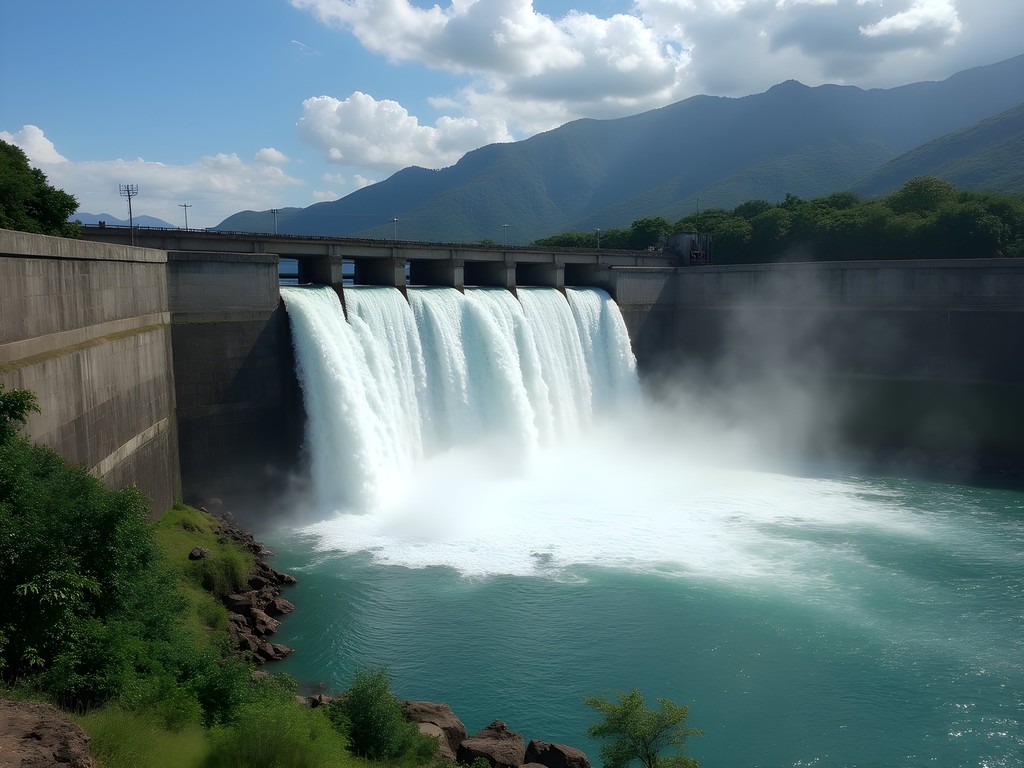
💡 Pro Tips
- Ask about water release schedules at your accommodation in La Vega city
- Visit on weekdays when fewer locals are around for a more private experience
- Bring a zoom lens for your camera – the best views are sometimes from a distance
El Salto de La Confluencia: Where Rivers Meet
My rafting background has given me a special appreciation for river confluences – points where two waterways join together. La Confluencia in La Vega offers not just a beautiful waterfall but also the magical sight of two rivers merging in a spectacular display of nature's power.
Located about 45 minutes from Jarabacoa, this site features a 12-meter waterfall at the exact point where the Jimenoa and Yaque del Norte rivers meet. The contrasting water colors – one often carrying more sediment than the other – create a visual phenomenon that's mesmerizing to watch.
The hike to La Confluencia is moderately difficult, taking about 50 minutes each way along a trail that descends through pine forest before opening up to river views. The path can be slippery after rain, so proper footwear is essential. This is when I'm grateful for my trekking poles which provide crucial stability on steep, muddy descents.
What makes this waterfall special for couples is the perfect combination of journey and destination. The hike itself offers numerous spots for photos and quiet moments together, while the final waterfall provides a dramatic payoff for your efforts.
Unlike some of the other falls on this list, swimming isn't recommended at La Confluencia due to strong currents and underwater hazards – something my safety training immediately identified. However, there are several calm pools upstream where you can safely cool off.
The best time to visit is late afternoon when the sunlight hits the water spray at the perfect angle, creating rainbows that appear and disappear with the changing mist. Bring a camera with a fast shutter speed to capture this ephemeral phenomenon.
The confluence point holds special significance in Dominican folklore. Local guides will tell you that wishes made where the rivers meet have special power – particularly wishes for relationship harmony and fertility. Whether you believe in such traditions or not, there's something undeniably powerful about standing at the exact point where two major waterways become one.
For those interested in local ecology, this area showcases how different river ecosystems interact. The vegetation changes noticeably on either side of the confluence, and fish can sometimes be spotted navigating the challenging currents where the waters meet.
As with many Dominican attractions, having a local guide enhances the experience significantly. They can point out easy-to-miss details like the remains of an old Spanish colonial bridge upstream and identify the various bird species that frequent the area.
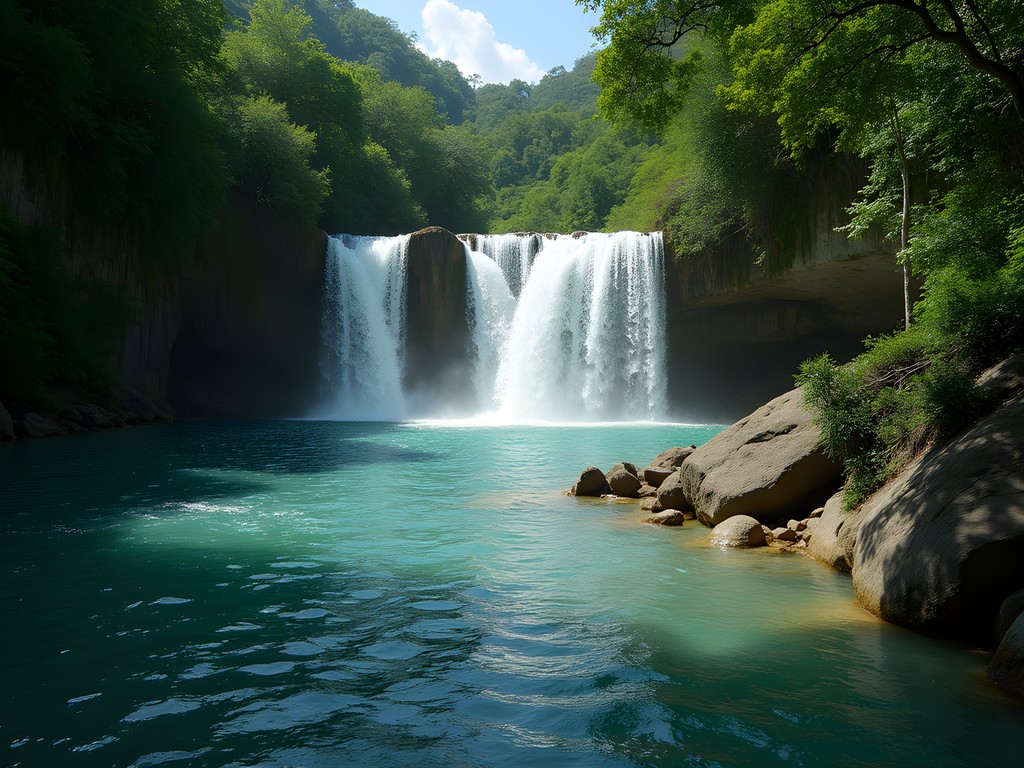
💡 Pro Tips
- Pack a light rain jacket even on sunny days – the mist zone extends surprisingly far
- Bring twice as much water as you think you'll need – the return hike is mostly uphill
- Allow extra time if visiting during fall, as afternoon thunderstorms can develop quickly
Final Thoughts
As I hiked back to my rental car after exploring the last of these seven waterfalls, I couldn't help but feel grateful for La Vega's hidden treasures. In a country famous for its beaches and all-inclusive resorts, these mountain cascades offer a completely different Dominican Republic – one of adventure, natural beauty, and authentic cultural experiences. What makes these falls perfect for couples isn't just their beauty, but the shared experiences they create – from challenging hikes rewarded by spectacular views to quiet moments of connection in nature's presence. The best adventures are those that combine challenge with beauty, safety with excitement, and La Vega's waterfalls deliver this balance perfectly. So pack your hiking boots, bring your sense of adventure, and prepare to discover the Dominican Republic that most tourists never see. ¡Hasta la próxima aventura! (Until the next adventure!)
✨ Key Takeaways
- La Vega's waterfalls offer couples both adventure and romantic moments away from crowded beach resorts
- Fall visits provide ideal temperatures and fewer crowds, though be prepared for occasional afternoon showers
- Local guides enhance the experience with cultural context and safety knowledge
📋 Practical Information
Best Time to Visit
October-November for ideal temperatures and fewer crowds
Budget Estimate
$50-100 per day for two people including transportation, guides, and meals
Recommended Duration
2-3 days minimum, ideally a long weekend
Difficulty Level
Moderate - Requires Basic Fitness And Comfort With Uneven Terrain
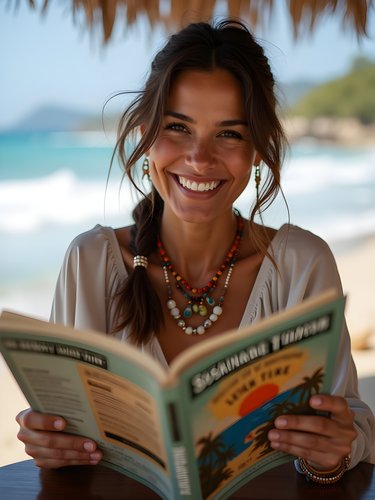
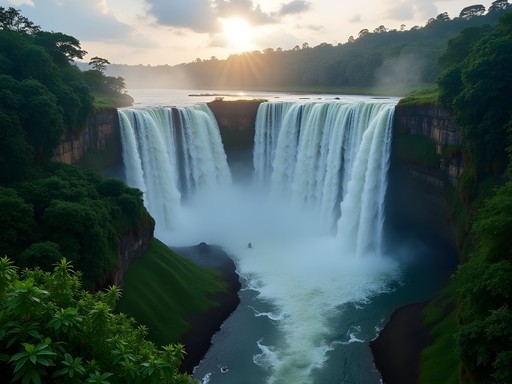
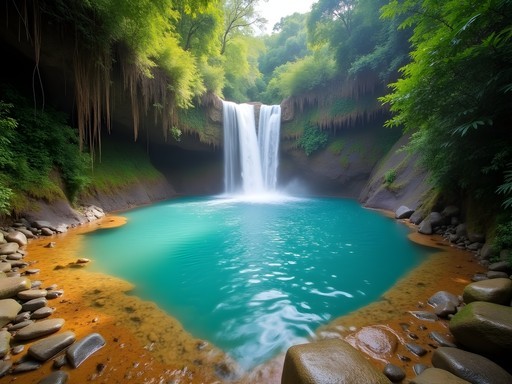
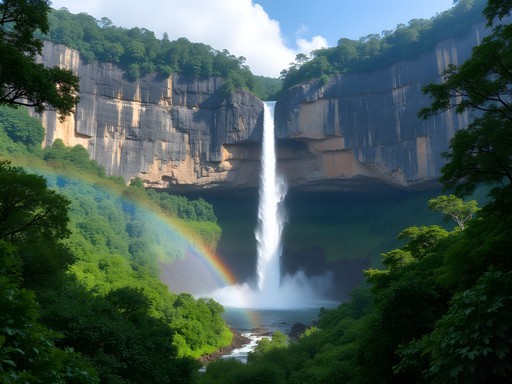
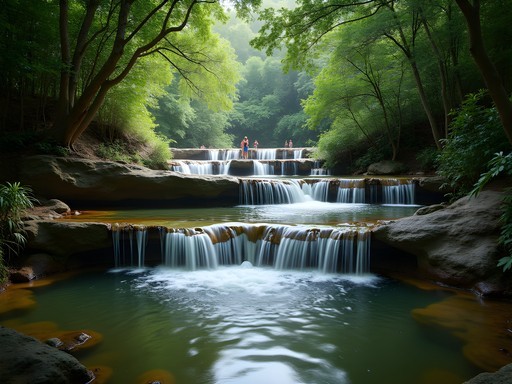
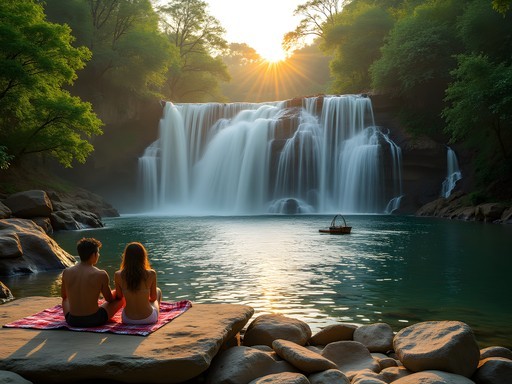
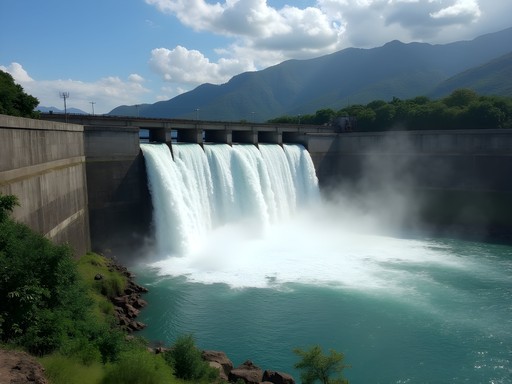


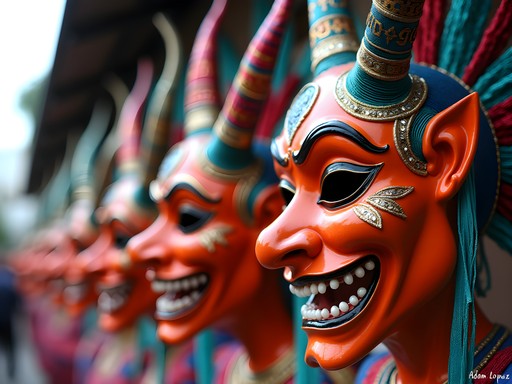
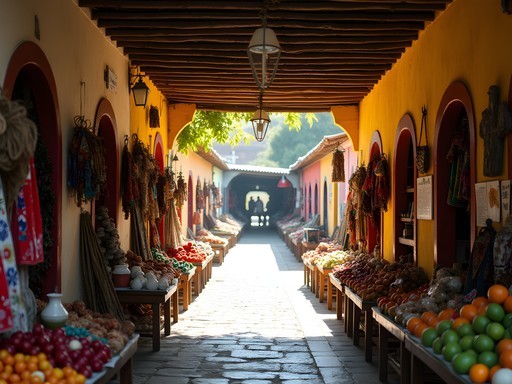
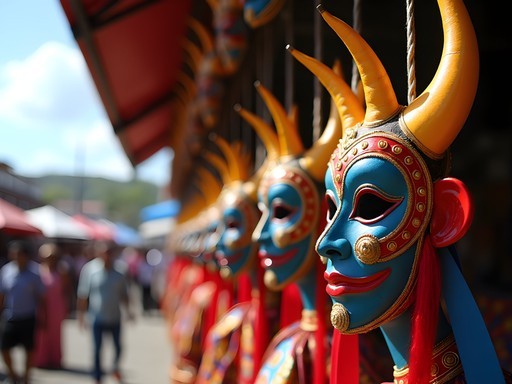
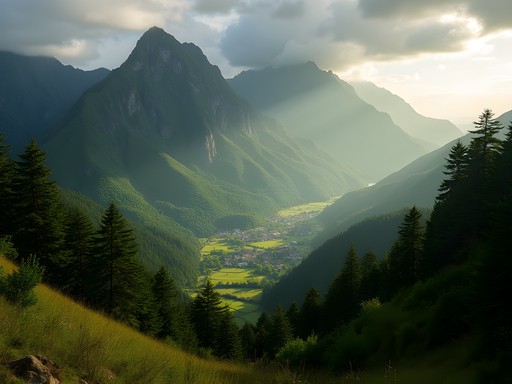




Comments
Hunter Thompson
Just a heads-up for anyone heading to these falls - the rainy season (May-November) completely transforms them! I visited Salto de Jima during both dry and wet seasons, and they're like different waterfalls. During rainy season they're MASSIVE and the swimming holes are often too dangerous, but the photo ops are insane. Dry season means you can actually swim and explore more. Also, local guides in La Vega now have WhatsApp - way easier to arrange trips than when I first visited in 2021!
dreamrider
Been to DR twice but never knew about these spots! Thanks for sharing these hidden gems!
freeexplorer
Just booked flights to DR after reading this!!! Can't wait to chase waterfalls! Anyone know if public transportation to these spots is reliable or should we rent a car?
Hunter Thompson
Definitely rent a car if you can! I backpacked through DR last summer and while you *can* reach most of these falls by combining public buses and motorbike taxis, it eats up so much time. We spent almost 3 hours getting to Salto de Aguas Blancas by public transport when it would've been a 45-min drive. The freedom to hit multiple falls in one day is worth the rental cost if you split it with travel buddies!
freeexplorer
Thanks Hunter! Will definitely look into car rentals then.
Taylor Moreau
Excellent write-up, Jennifer. I was in La Vega earlier this year researching for a business travel guide and found your recommendations spot on. For business travelers with a free day, Salto de Jimenoa offers the perfect balance of accessibility and natural beauty. I would add that cell service is quite spotty near most of these falls - something to note for those who need to stay connected. The local tourism office in La Vega now offers maps specifically for these waterfall trails, which wasn't the case when I first visited in 2019.
travellegend
I visited El Salto de Jima last year and it was exactly as you described - a local secret! We were the only tourists there that day. The road getting there was pretty rough though. We rented a small car and really struggled with some of the potholes. I'd recommend either a 4x4 or taking one of the local moto-taxis from the nearest town. My waterproof backpack was essential since you have to wade through water in some spots to get the best views.
summerwalker
How difficult are the trails to Salto de Aguas Blancas? I'm traveling with my mom who's in her 60s but pretty active. Would it be too challenging for her?
Jennifer Rodriguez
Hi summerwalker! The trail to Aguas Blancas is moderate-difficult with some steep sections. If your mom is active, she might be fine, but I'd recommend starting with Jimenoa or Baiguate which have better maintained paths. Also, bring hiking poles - they're a game changer on these trails!
summerwalker
Thanks Jennifer! We'll start with the easier ones and see how it goes.
winterzone
OMG these photos are STUNNING!!! 😍 Adding this to my bucket list right now!
islandninja
Just got back from La Vega last week and visited Salto de Jimenoa and El Salto de Baiguate! Jennifer wasn't kidding about them being hidden gems. The locals we met were super friendly and gave us directions to a small food stand near Jimenoa that served the best empanadas I've had in my life. We almost missed the trail to Baiguate because it's barely marked - definitely screenshot the directions from this post if you're going!
dreamrider
Did you need a guide for any of them? Planning to go solo next month.
islandninja
We did Jimenoa without a guide, but hired one for Baiguate (about $20). Worth it for the local stories alone!
BackpackBuddy
Saving this for my DR trip in December! Thanks for sharing!
PhotoTrekker
I really like your photo of El Salto de Baiguate! The light filtering through the trees is magical. What time of day did you take that shot?
Venture X
Premium card with 2X miles, $300 travel credit, Priority Pass